Italian parks and botanical gardens are home to centuries-old trees, flowering paths and rare plants. They protect biodiversity, monitor climate change and carry out scientific research.
Some of them form the backdrop to historical residences and famous buildings. Many historical and intellectual figures have walked through them and may have been inspired by their beauty. We would like to present to you what we think are the 10 most beautiful and where you can admire spectacular nature.

Looking at beauty in the world is the first step of purifying the mind.
10. Botanical Garden of Padua (Veneto)
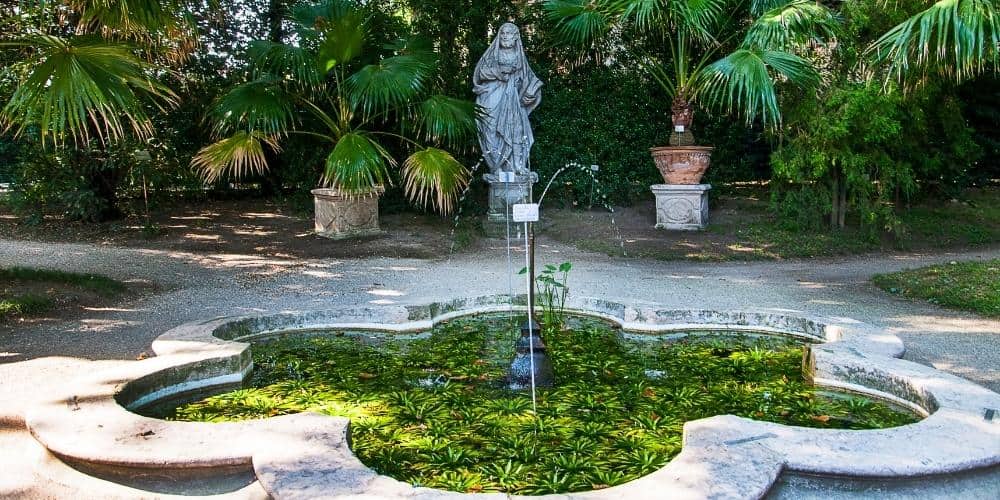
The Botanical Garden of Padua is the oldest Botanical Garden in the world. It was established in 1545 to cultivate medicinal plants. It has always remained here.
It is the pride and joy of the University of Padua. Over the centuries, it has been at the centre of a dense network of international relations. Exerting a profound influence in the research environment and playing a prominent role in ideas, knowledge, plants and scientific material. Based on these considerations, it was inscribed on the UNESCO World Heritage List as a cultural asset in 1997.
Surrounded by walls, thousands of plant species are preserved here. Guided tours for groups and individuals are organized daily throughout the year. The Botanical Garden of Padua is open from Tuesday to Sunday and is closed on Monday. The opening hours are:
• From January to February: 10 am - 5 pm (last admission 4:15 pm)
• March: 10 am - 6 pm (last admission 5:15 pm)
• From April to September: 10 am - 7 pm (last admission 6:15 pm)
• October: 10 am - 6 pm (last admission 5:15 pm)
• From November to December: 10 am - 5 pm (last admission 4:15 pm)
9. La Mortella and Ravino: the botanical gardens of Forio d'Ischia (Campania)

La Mortella Garden
There is a reason why Ischia is called the Green Island. A great demonstration of this can be found in these two magnificent botanical gardens, both located in the area of Forio. We are talking about the unmissable La Mortella and Ravino.
La Mortella is an exotic garden in the heart of the Mediterranean with the perfect landscaping. Here, gathered in a unique "collection": rare flowers and plants, one museum, temples, theatres and romantic greenhouses. The garden was created by an extraordinary couple: Susana and William Walton. William was one of the leading English musicians of the 21st century, while his wife Susana was a refined botanical collector. The couple lived in Ischia from 1949 and, their ashes are kept in the garden.
The Ravino Gardens, on the other hand, were founded recently and is the only park of its kind in southern Italy. Here you can find cacti of every type and origin. The garden was created thanks to Peppino d'Ambra, a great collector of cacti. Thanks to his care, the plants grew incredibly until this huge collection found its final dimension in the present garden. Here, visitors can admire a spectacle of "succulents" from different ecosystems: Ferocactus, agaves, aloes and prickly pears. Strolling in the garden, you will also come across a family of beautiful blue peacocks with their multicolored tails.
• Giardini La Mortella open on Tuesday, Thursday, Saturday and Sunday and follows the timetable 9 - 19
• Giardini Ravino open from June to November on Monday, Wednesday, Friday, Saturday and Sunday and follows the timetable 10 - 19
8. Botanical Garden of Naples (Campania)
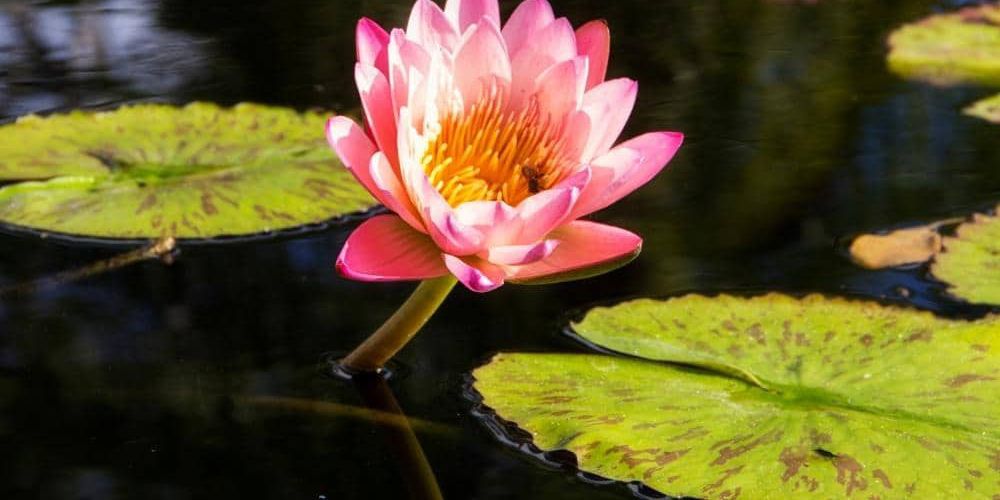
The Botanical Garden of Naples was founded in the early 19th century. It is part of the University of Naples Federico II. It carries out botanical research and teaching activities for students of all ages. The Botanical Garden of Naples preserves majestic arboreal specimens of great historical and scientific value. As well as endangered plants for future reintroduction into the wild.
The Botanical Garden is divided into various exhibition areas. Many of which combine extreme aesthetic value with scientific significance. There is also a garden for the blind and visually impaired. A Japanese garden, a medieval garden and a collection of plants mentioned in the Bible and the Gospel. There are also two museums: a Paleobotany Museum and an Ethnobotany Museum. Entrance to the garden is free and, no need to book.
• The Botanical Garden of Naples is open on Mondays, Wednesdays and Fridays from 9am to 2pm and on Tuesdays and Thursdays from 9am to 4pm.
7. Botanical Garden of Palermo (Sicily)
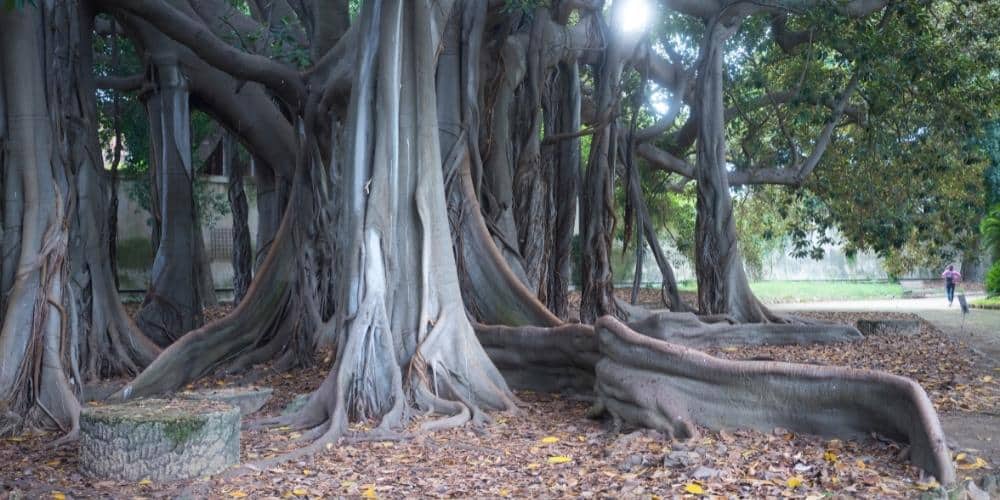
Palermo's Botanical Garden is a giant open-air museum. It provides the opportunity to study a wide range of Mediterranean, tropical and subtropical plant species for more than two centuries. On special events or days such as Zagara di Primavera at the end of March and Earth Day, guided tours are organised, with workshops, shows, demonstrations and ad hoc activities.
The peculiarity of this garden today is the variety of species it hosts, making it a place rich in expressions of different flowers. It covers about 10 hectares and is schematically divided into orders and sectors. The most important plants are divided according to systemic nature, such as the Linnaeus system, the Engler system, the Palmetum and the Cycadetum.
The Botanical Garden of Palermo is open every day with the following hours:
• From November to February: 9-17;
• March and October: 9-18;
• April and September: 9-19;
• From May to August: 9-20.
Last admission one hour before.
Discover the Botanical Garden of Palermo6. Majella Botanical Garden Michele Tenori (Abruzzo)
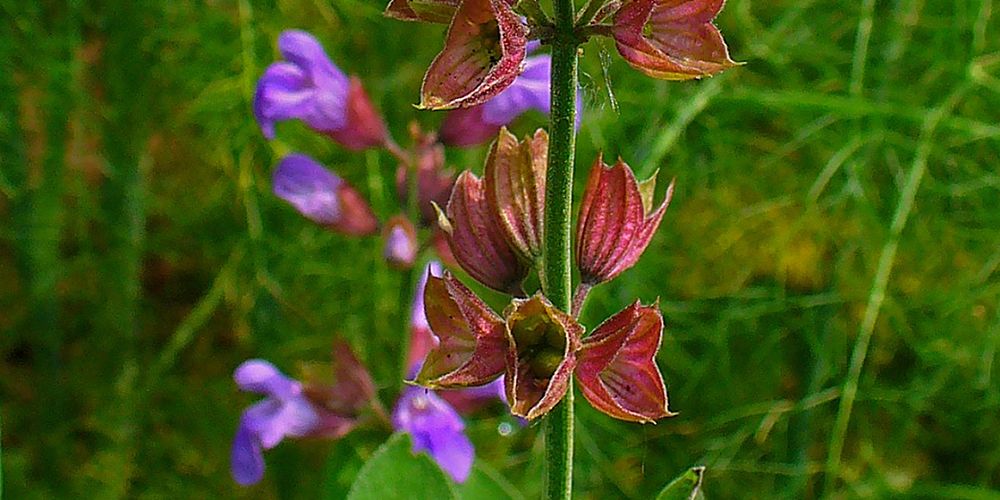
The "Michele Tenori" Botanical Garden of the Majella is located in the Majella National Park, which covers more than 62,000 hectares and includes 39 municipalities, several villages and entire slopes of the Apennines. The Michele Tenori Botanical Garden is located in Lama Dei Pelini.
Because of its vast collection of plant biodiversity, the garden is on its way to becoming a UNESCO geopark, in line with the objectives of the international organisation and the geological routes to raise awareness of the specific features of the Majella. Events and activities include excursions, research, exhibitions and nature painting courses.
Admission to the park costs €3 (full price ticket) and €1.50 (for children under 14). Opening hours are
• from April 19 to June 15: Saturdays, Sundays and holidays from 10:00 to 13:00 and from 16:00 to 19:00
• from June 16 to August 31: every day from 10:00 to 13:00 and from 16:00 to 19:00
• from September 1 to 30: Saturdays, Sundays and holidays from 10:00 to 13:00 and from 15:00 to 18:00
5. Aymeric Park of Laconi (Sardinia)
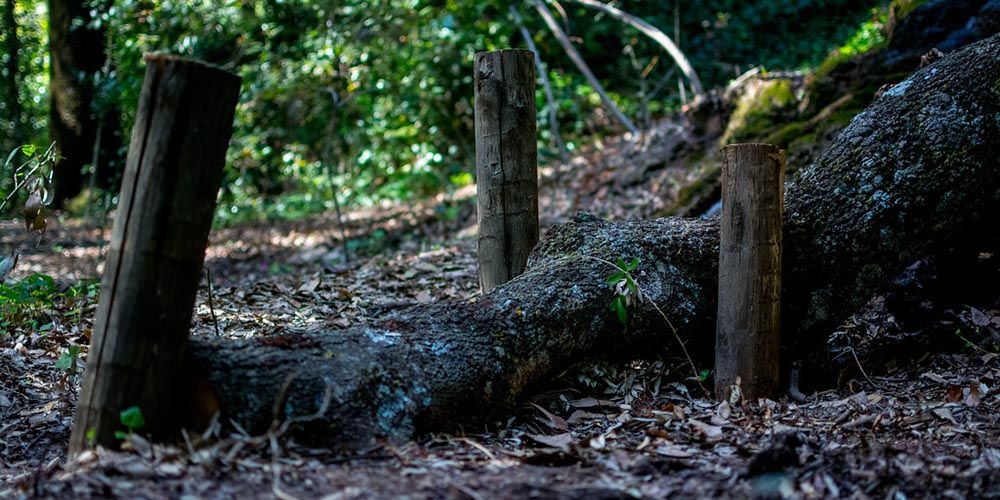
Aymeric Park is the largest urban park in Sardinia. A botanical paradise is full of rare plants from all over the world. Located in Laconi, between the provinces of Oristano and Nuoro, it is a special place for nature and trekking lovers.
Visits have an itinerary that starts in the wood of holm oaks, oaks, olive and carob trees, with streams, waterfalls and small lakes. Here you will find exotic plants, strange plant forms and exceptional large trees, such as cedars from Lebanon and the Himalayas. The ruins of a medieval castle make the visit even more impressive.
• Entrance to the Aymeric Park is free, it is open every day from 7.30am to 4pm
4. Villa Taranto Botanical Garden in Verbania (Piedmont)
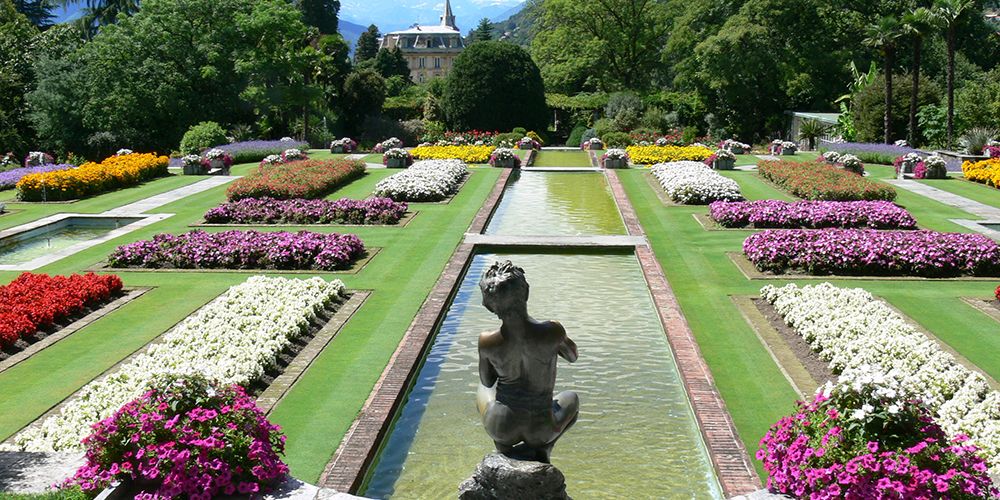
The Villa Taranto Botanical Garden in Verbania-Pallanza on Lake Maggiore is worth visiting. It can be reached by boat and in the springtime offers incredible blooms, first tulips and then dahlias. A labyrinth of colour in which to slip in and lose yourself!
When can you visit the Villa Taranto Botanical Garden? The garden is open every day from March to November at the following times:
• from 13 to 31 March: 9.00 am - 5.00 pm (last entry) 6.00 pm gates close
• from 01 April to 05 October: 9.00 am - 6.00 pm (last entry) 7.00 pm gates close
• from 6 October to 19 October: 9.00 am - 5.00 pm (last entry) 6.00 pm gates close
• from 20 October to 02 November: 9.00 am - 4.00 pm (last entry) 5.00 pm gates close
3. Gardens of Trauttmansdorff Castle in Merano (Trentino-South Tyrol)
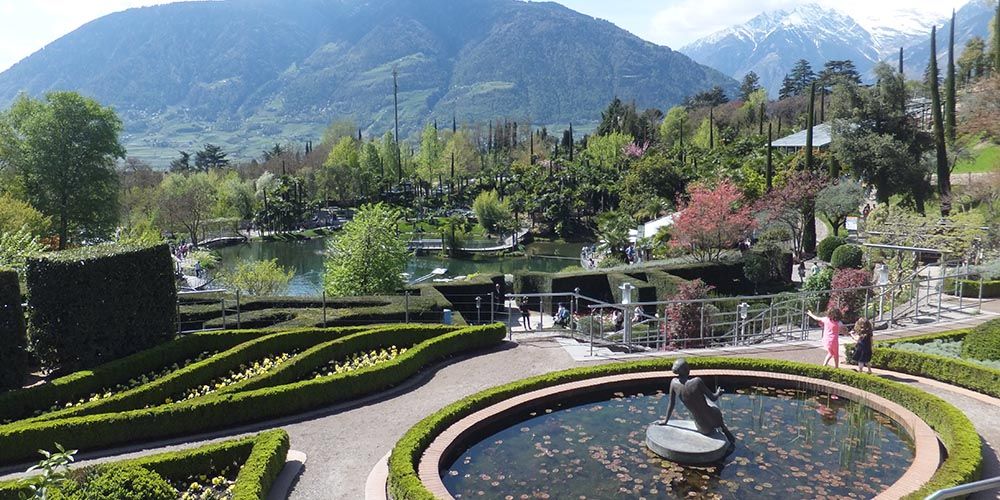
A natural amphitheatre at the foot of Trauttmansdorff Castle in Merano, a place much loved by Princess Sissi. Established in 2001, the Trauttmansdorff Gardens celebrate the entire plant world with plants from every ecosystem and botanical rarities. One day is not enough to visit them! There are many attractions, from multi-sensory stations to multimedia shows. The Geological Mosaic and the Underground Plant Kingdom complete the work.
When can the Merano Gardens be visited? The gardens can be visited from March 29th to November 15th at the following times:
• From March 29 to October 15: 9:00–19:00 (last admission at 17:30)
• From October 16 to 31: 9:00–18:00 (last admission at 16:30)
• From November 1 to 15: 9:00–17:00 (last admission at 15:30)
• Every Friday in June, July and August: 9-23 (last admission at 21:30)
Please note that visiting the gardens takes between 3 and 6 hours and animals are not allowed.
2. Brera Botanical Garden in Milan (Lombardy)
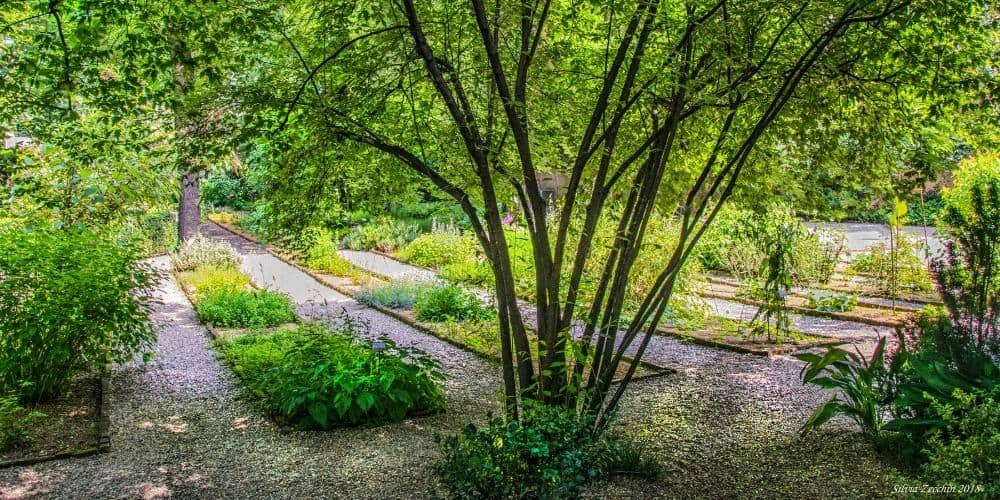
The Brera Botanical Garden is a green lung in the heart of Milan. An institution with 247 years of history, it was created in 1775 thanks to the Duchess Maria Theresa of Austria. It covers five thousand square metres, next to the Pinacoteca and the Accademia di Belle Arti. Right under the astronomical observatory and the Braidense Library.
The Brera Botanical Garden has a long history, dating back to the 14th century, when it was a place of meditation and cultivation of plants for the Humiliated Fathers and then. In 1935 the Garden was annexed to the University of Milan, which still manages it today.
The Brera Botanical Garden can be visited every day from Monday to Saturday (excluding holidays):
• From April 1 to October 31: 10 am-6 pm;
• From November 1 to March 31: 9:30 am-4:30 pm.
1. Giardino di Ninfa in Cisterna di Latina (Lazio)
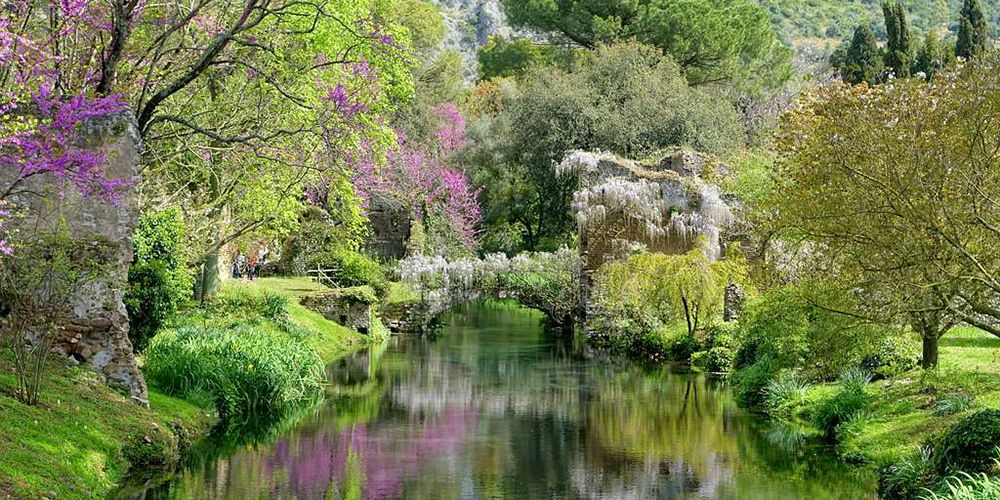
We are in the Agro Pontino area, in Cisterna di Latina to be precise, where the beautiful Giardino di Ninfa is located. Inside, there is a very romantic atmosphere and, you immediately feel transported to another era. The ancient ruins of Ninfa, a settlement dating back to Roman times, together with the centuries-old trees and the splendid flowers, create a true evocative ensemble and a delicate balance, almost magical.
When can the Garden of Ninfa be visited? The Gardens of Ninfa are open from Saturday 29 March until November, they can be visited exclusively by reservation through the Ninfa garden. Did you know all these botanical parks? Have you decided which one to dive into with the arrival of the first Italian spring heat?!
Listen to the podcast version of the article with Monna Lisa & Leonardo's voices
About the author
Written on 17/01/2022

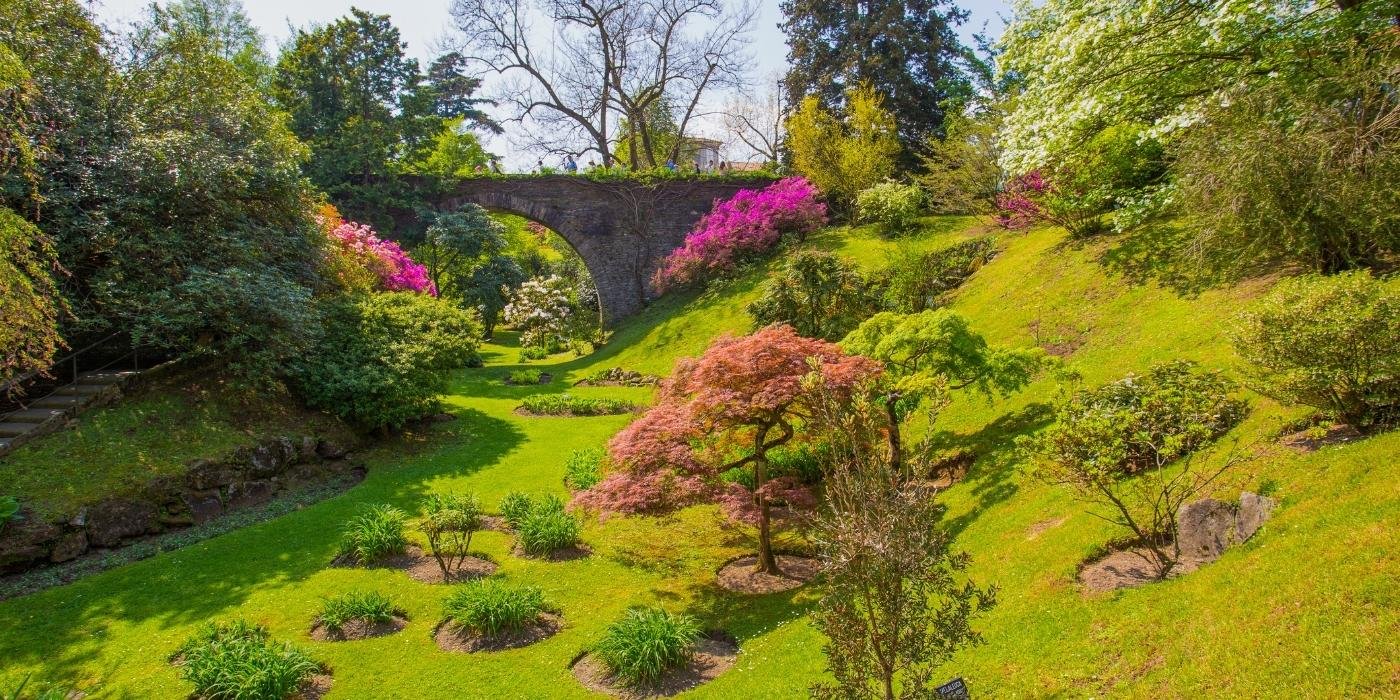

Ludovica Poliero
Italy's parks and botanical gardens are places of study and relaxation. From North to South, here are the 10 most beautiful.